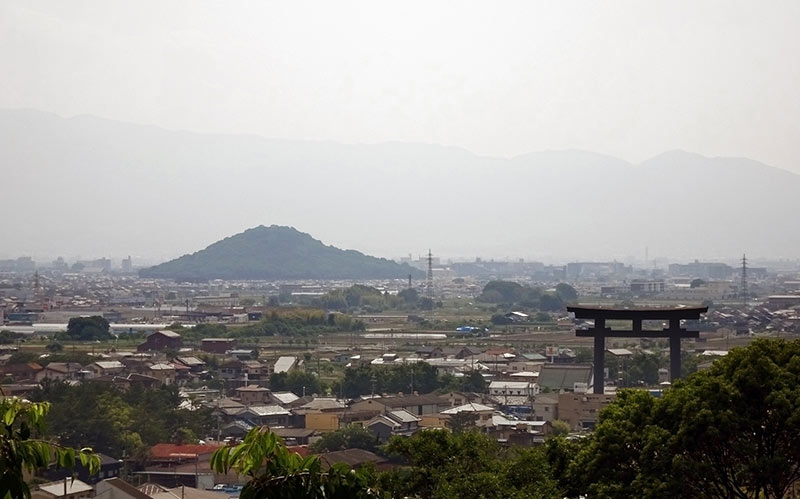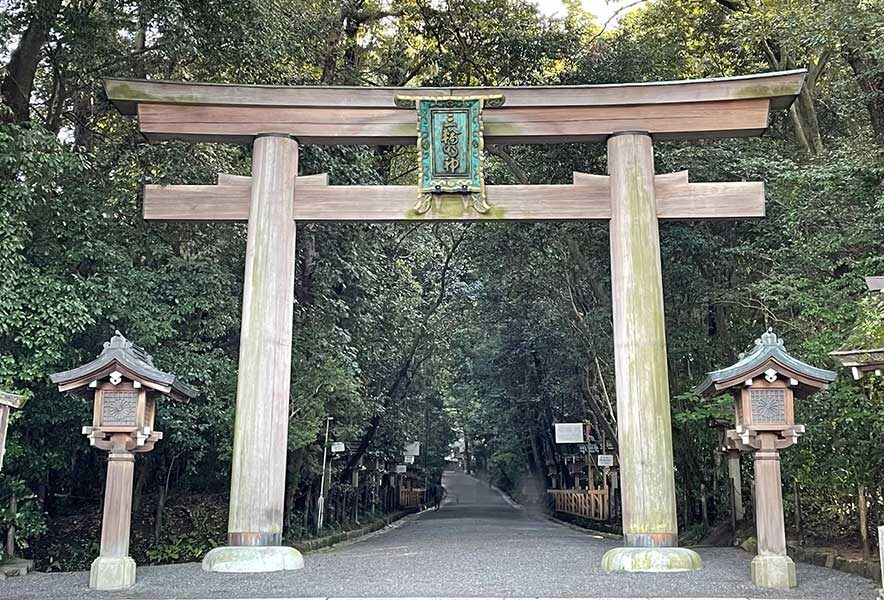- The founding of “Oomiwa jinja Shrine” appears in mythology! The entire Mt. Miwa becomes the deity.
- Oomiwa jinja Shrines” remains a place of mountain worship! Pile of rocks on the Miwa Mountain
- What kind of buildings are there in “Oomiwa jinja Shrines”? Some are nationally important cultural properties.
- Access to Oomiwa jinja Shrines
- Parking around Oomiwa jinja Shrines
- Oomiwa jinja Shrines Official Website
- Recommended around Oomiwa jinja Shrines
The founding of “Oomiwa jinja Shrine” appears in mythology! The entire Mt. Miwa becomes the deity.
Oomiwa jinja Shrines is located in Sakurai City, Nara Prefecture.
The founding of the shrine is mentioned in the Kojiki (Records of Ancient Matters) and Nihonshoki (Chronicles of Japan), which contain Japanese mythology.
Although there are some differences in the way of writing about the founding of the shrine, it is said that a god named Okuninushi enshrined Ohmononushi no Okami (the deity of this shrine) on a mountain called “Miwayama,” and this is the tradition of the founding of this shrine.
Mt. Miwa, where Oomononushi Ojin is enshrined, has long been revered as a deity, and was regarded as the protector of the nation during the reign of Emperor Sojin, the 10th Emperor of Japan.
Incidentally, it was not until the Meiji era (1868-1912) that the shrine came to be called “Oomiwa jinja Shrines”; it was formerly called “Omononushi Ookami Shrine” and after the Middle Ages “Miwa Myojin”.
Recently, Their Majesties the Emperor and Empress came to visit the shrine in 1970 (when they were the Crown Prince and Crown Princess) and 2014 (after their accession to the throne).

Oomiwa jinja Shrines” remains a place of mountain worship! Pile of rocks on the Miwa Mountain
One of the oldest shrines in Japan, the Ogami Shrine still retains mountain worship, with Mount Miwa as its deity.
It is said that a god dwells in every tree and every plant in the mountain, and in the past, entry to the mountain was strictly restricted as a no-entry area.
In modern times, however, due to requests from believers, it is now possible to enter the mountain upon notification and payment of a fee.
The reception desk is located at the “Sai Shrine,” which is a subsidiary shrine of the main shrine (a shrine that enshrines a deity closely related to the main shrine), and there is a rock called Iwakura, which is believed to be a rock.
Please refer to the website as there are rules and regulations within the mountain, such as no photography, no eating or drinking (but you can drink water), etc.
What kind of buildings are there in “Oomiwa jinja Shrines”? Some are nationally important cultural properties.
The precincts of the temple, designated as a national historic site, are home to a number of buildings, including those designated as important cultural properties.
The buildings designated as Important Cultural Properties are the “Hall of Worship” and the “Three Torii Gates.
The hall of worship was rebuilt in 1664 by the fourth shogun, Tokugawa Ietsuna, and is the place to worship Mt.
The three torii gates were built in 1883 and stand at the point of separation between the hall of worship and Mt.
It has been considered sacred as an alternative to the main shrine. Since Mt. Miwa is the deity of the shrine, there is no “main hall” at this shrine.
There are many other smaller shrines and subordinate shrines in the area, so please visit them as well.
Access to Oomiwa jinja Shrines
1422 Miwa, Sakurai, Nara 633-8538
5 minutes walk from Miwa Station on JR West Sakurai Line
Parking around Oomiwa jinja Shrines
Oomiwa jinja Shrines Official Website
Official site:https://oomiwa.or.jp/
